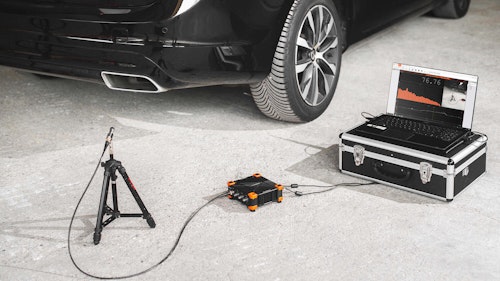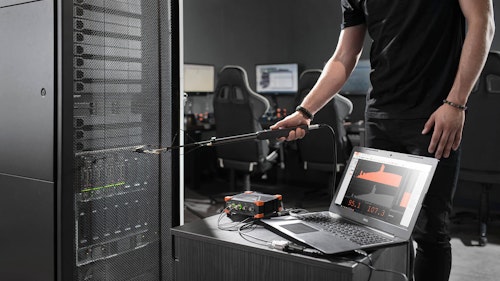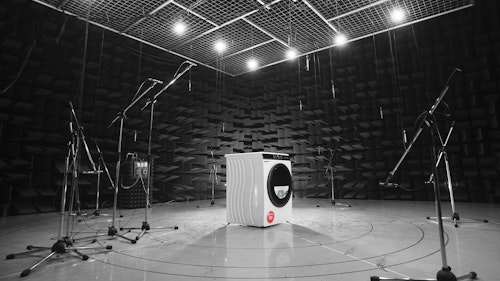SIRIUS® Modular
Modular Data Acquisition (DAQ) System
When room acoustics properties are at issue, the RT60 reverberation time solution represents an essential tool for obtaining an accurate measurement of reflected sound. The easy setup enables reliable measurement for effective modification of room parameters and easy achievement of desired reverberation time.
Fully complies with the ISO 354 standard using the integrated response method.
Our top-of-the-class data acquisition hardware with 160 dB dynamic range allows direct input of IEPE compatible microphones with support for TEDS automatic recognition. Data acquisition system can be scaled for any number of microphones, microphones can be effortlessly calibrated with a calibrator.
Different evaluation ranges for reverberation time estimation are supported (T20, T30, and T60).
Estimation of modal decay parameters from noisy measurements of reverberant and resonating systems using the Lundeby method.
Calculate the absorption coefficient and make a report with the provided report template.
Enjoy our industry-leading 7-year warranty. Our data acquisition systems are made in Europe, utilizing only the highest build quality standards. We offer free and customer-focused technical support. Your investment into the Dewesoft solutions is protected for years ahead.
And we're confident you'll love it too! But don't just take our word for it. Get hands-on with a demo unit, completely free of charge. No strings attached, just real data. Reach out to your local Dewesoft team and get your demo unit now!
It includes everything you need for advanced data acquisition and common signal processing — no maintenance fees, no contracts. You buy it, you own it. All future updates? Free forever. And the best part? Analysis seats are unlimited and free. Once the data is recorded, anyone can download our software to review and analyze your data — no license needed.
Dewesoft is 100% owned by employees who believe in what we do — and love doing it. We’re in this with heart, passion, and long-term commitment. What does that mean for you? Our core value — caring for our customers — isn’t going anywhere. We’re here for the next 100 years, protected from outside acquisitions. Your investment in our technology is safe, supported, and future-proof.
At Dewesoft, quality isn't just a promise — it's a core value. Our products are 100% designed, developed, and manufactured in-house, right in the heart of the European Union. From precision machining and PCB manufacturing to final assembly and software development — we do it all ourselves, to the highest ISO standards. We're proud to support local production and take social responsibility seriously.
At Dewesoft, quality is more than just a word — it's a commitment. That's why our products come with an industry-leading 7-year warranty. It's just one more way we protect your investment and give you peace of mind for the long run.
Reverberation time is the time required for the sound pressure level to fall by 60 dB from its initial level. Sound waves in a room will repeatedly bounce off reflective surfaces.
Reverberant sound is the collection of all the reflected sounds in an auditorium.
When these reflections mix with each other, a phenomenon known as reverberation is created. Reverberation reduces when multiple reflections hit absorbent surfaces such as curtains, chairs, and tables. Reverberation is a key parameter when qualifying the acoustic status of a room.
Reverberation time can be evaluated based on a smaller dynamic range than 60 dB and extrapolated to a decay time of 60 dB. The evaluation of the decay curve for each frequency band shall start at 5 dB below the initial sound pressure level. The bottom of the evaluation
range should be at least 10 dB above the overall background noise of the measuring system.
T20 - derived from the time at which the decay curve first reaches 5 dB and 25 dB below the initial level.
T30 - derived from the time at which the decay curve first reaches 5 dB and 35 dB below the initial level.
T60 - derived from the time at which the decay curve first reaches 5 dB and 65 dB below the initial level.
Use the improved algorithm for reverberation time estimation (Lundby algorithm) with an automatic search option.
Option manual will calculate the reverberation time from the first to the second locked cursor. It is important to place the first cursor on the right position, and the position of
the second cursor will be found automatically.
Reverberation time Math will calculate several parameters and output them as separated channels. The calculations are:
T - measured reverberation time
ETC - sound energy-time curve
Octave time data - octave analysis type can be selected from 1/1 or 1/3 octave
Line fit - fitted curve on the energy-time curve
The impulse response may be measured directly by using an impulse source such as a pistol shot, balloon burst, spark gap or any other sound source that produces an impulse with sufficient bandwidth and energy).
The absorption (alpha) coefficient of a material indicated the proportion of sound which is absorbed by the surface compared to the proportion which is reflected back into the room.
Provided Excel template contains formulas for averaging and calculation of absorption (alpha) coefficient. Enter the parameters about the room conditions and dimensions (temperature, humidity, volume, surface).
The section in Excel template is dedicated to reporting. Alpha coefficient is calculated from reverberation times and other parameters, that have to be entered (surface area of a test specimen, speed of sound, …).
The result shown in the Excel template is the alpha coefficient for each frequency band and a graph of the alpha coefficient.
We've gathered all the answers you're looking for, neatly organized just for you.
Reverberation time is the time required for the sound to “fade away” or decay in a closed space. Sound in a room will repeatedly bounce off surfaces such as the floor, walls, ceiling, windows or tables.
When these reflections mix, a phenomenon known as reverberation is created. Reverberation reduces when the reflections hit surfaces that can absorb sounds such as curtains, chairs and even people.
The reverberation time of a room or space is defined as the time it takes for sound to decay by 60dB. For example, if the sound in a room took 10 seconds to decay from 100dB to 40dB, the reverberation time would be 10 seconds. This can also be written as the T60 time.
See the Dewesoft Reverberation Time measurement solution.
In many cases, the ISO 3382 series of standards are used in the calculation of reverberation time. These standards define the methodology to be used when determining the T20, T30, and T60 values as well as the calculation of uncertainty and reliability of the values.
Dewesoft Reverberation Time measurement solution is fully compliant with the ISO standards.
Can't find the answer you're looking for? Our team is happy to answer your questions.
See and browse related and compatible data acquisition products.
Modular Data Acquisition (DAQ) System
Portable 4-Channel Sound and Vibration Analyzer
Award-Winning Data Acquisition and Digital Signal Processing Software
IEC/ANSI traceable calibration for the entire measurement chain
See and browse related and compatible testing solutions.

Class 1 Sound Level Meter for Sound and Noise Level Measurement

Sound intensity level solution fully compliant with ISO standards

Sound power level measurement solution according to ISO standards

Applied psychoacoustics and sound engineering